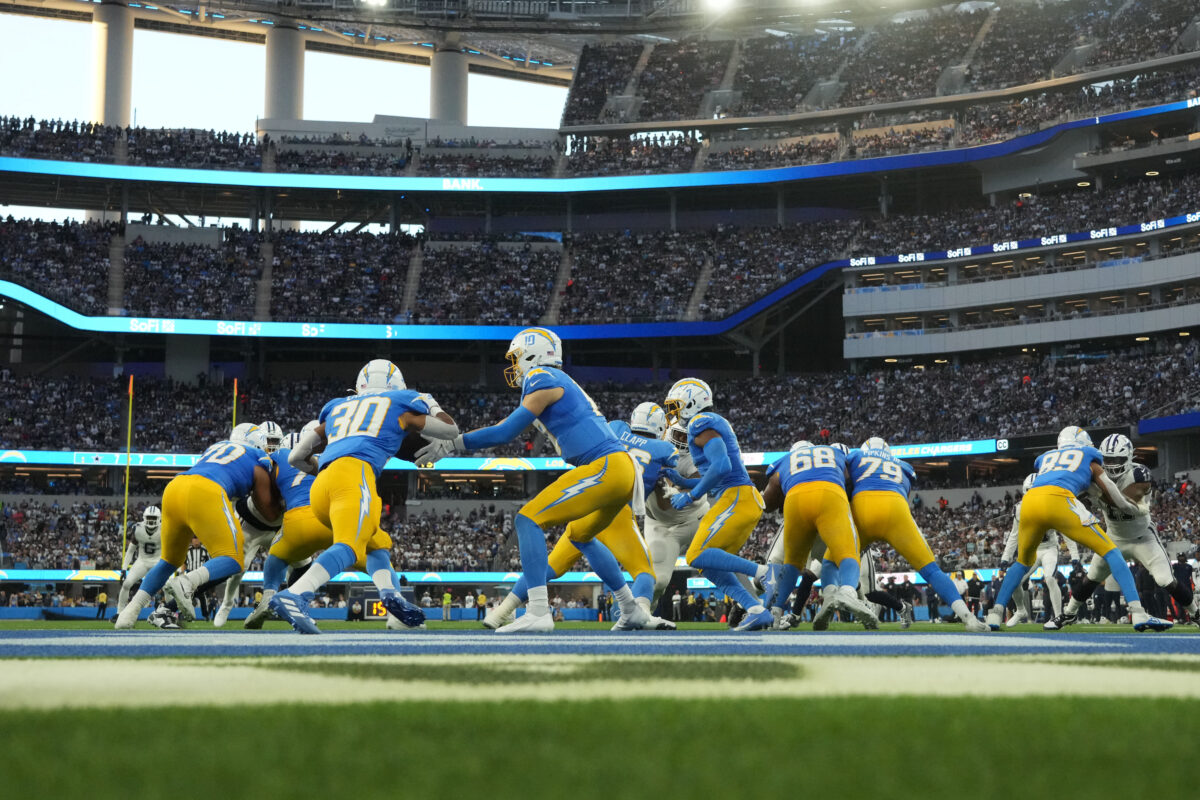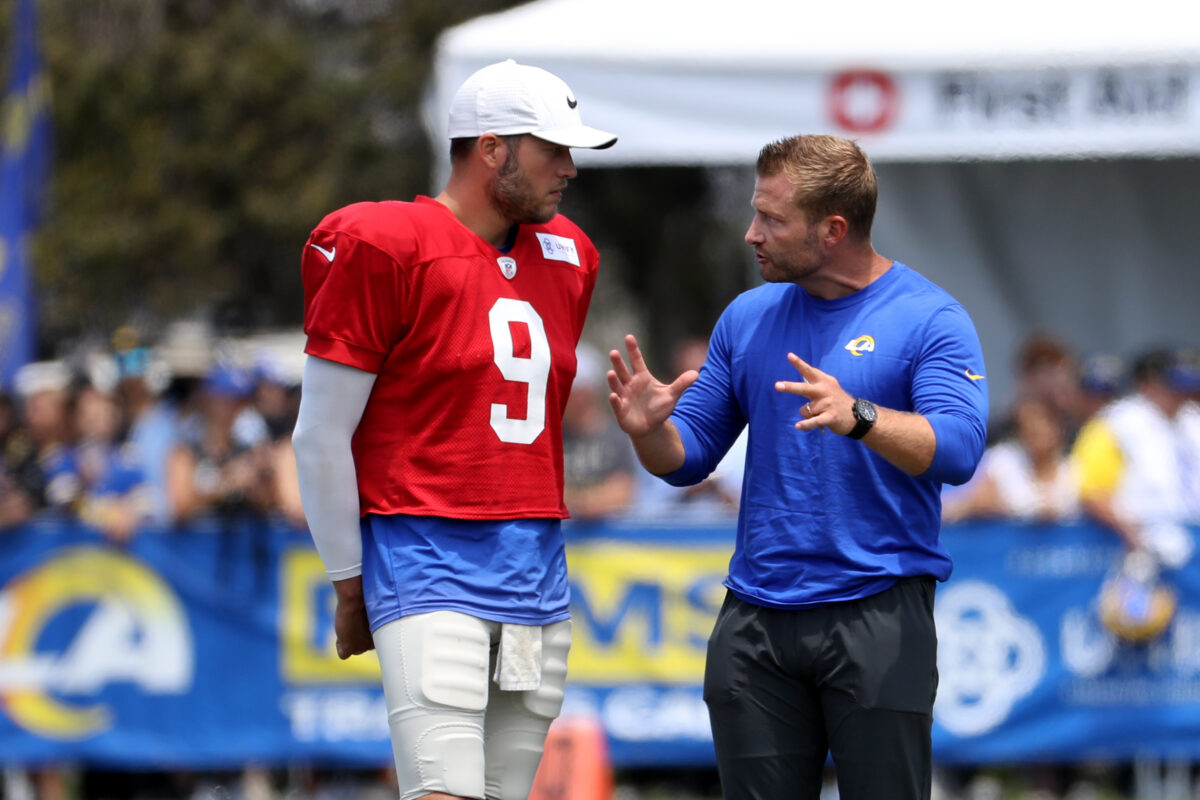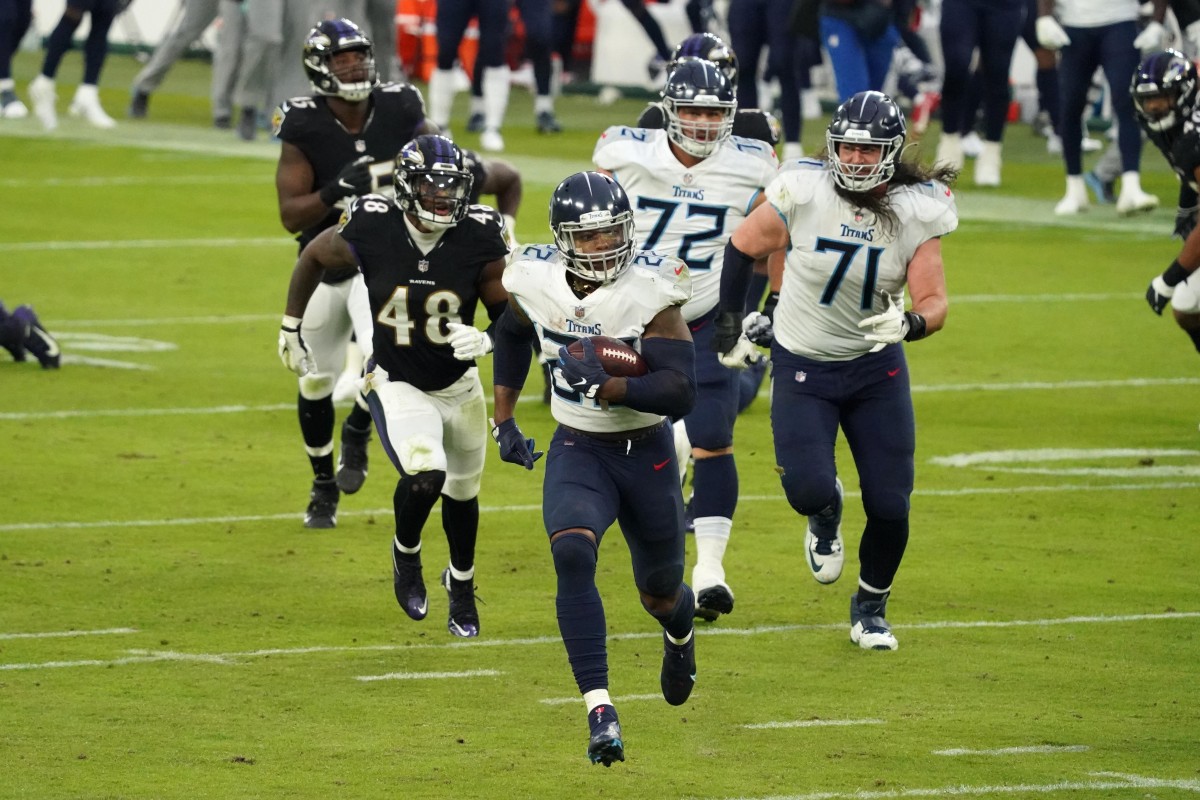I like to think I know stats. I’ve analyzed and reviewed every player in every NFL game for the last 27 years. I’ve projected and ranked every fantasy-relevant player, every football week, since 1997. So I stay close to stats. During the season, I literally dream about stats and players and games.
So.
What’s wrong with the NFL?
For many years, decades even, Week 1 and 2 produced misleading stats suggesting the NFL was in for a high-scoring year. It was clear back then that the defenses needed to catch up to the offenses – which eventually they would do – but for especially Week 1, more monster games and performances happened than would for the rest of the season.
The old mantra was “don’t get excited about Week 1” since it was always artificially high. After the last two weeks, it feels more like the mantra needs to change to a Marine Corps sergeant strolling down the barrack, banging a nightstick on an empty metal trashcan while yelling, “Wake up, ladies!”
Let’s start with the quarterbacks over the last seven years. Below are the measurements of the position for each year after two games played:

It isn’t just that there are the fewest passing yards, it is that the NFL is considered to be a “passing league.” Or at least it was. After 32 games, there have only been five quarterbacks that threw for at least 300 yards. Last year, almost one in four quarterbacks threw for 300 yards in those weeks. This year? Only five in the first two weeks.
Think that’s stark? Those five quarterbacks were Jared Goff, Brock Purdy, Geno Smith, Tua Tagovailoa, and Matt Stafford. It is possible that none of them started in your league. And, none of those five 300-yard passers threw more than one touchdown.
So the quarterbacks are at historic ineffective and unproductive levels to open the season. Let’s break down how that trickles into the receivers:

Touchdowns are on a sharp decline for both positions. Yardage hasn’t been lower for both positions. The number of 100-yard receivers and 50-yard tight ends remained about the same but not the scores and yardage overall. Tight-end scoring has all but evaporated.
The passing stats are down, significantly in several areas and that depresses fantasy points. But, what about those running backs? How big of a hit have they taken? They’ve been devalued and underpaid due to their short shelf life, so have they been as bad or even worse?

Wait, what?
Running backs opened the year with some of the highest rushing yardage and scores in the last seven years? The receiving stats are lower for the last two seasons, surprising given the number of third-down backs and dual-threat running backs. So, the only category of fantasy football interest that thrived was rushing stats from running backs.
It’s a passing league my …
But my drafts picks are okay, right?
No. No they are not. At least most of them are not.
Using The Huddle 12-team expert league draft results from the last three seasons as a sample, I compared each pick to where they ranked within their position after the first two weeks of that season. I marked in red those picks that I viewed as disappointing to the team owner. Again – two weeks into their season, this is how the first three rounds looked to fantasy owners.

Chances are that every fantasy team owner has at least a player or two who disappointed after two games. Those first three picks are precious and really need to at least meet expectations.
There were 11 disappointments in both 2022 and 2023 over their first three rounds, – about a third of the picks. In 2022, there were only four disappointments in the first 23 picks which meant that those first two rounds paid off pretty well for almost every fantasy owner. It worsened in 2023, but still only 11 players in the first 36 were a disappointment.
This season? Half of all picks in the first three rounds have been disappointment and they were skewed more towards the first round that only had four picks come through for fantasy drafts. By the end of the second round, 14 of the 24 selections had not delivered. So, not only half have not delivered, but they were mostly in the first two rounds that you need to get right to compete.

Does the NFL hate my fantasy team?
No. I cannot rule you out personally, but not your fantasy team.
So, what in the NFL is going on? Is it possible that only defenses practiced this summer while offenses spent their time on Zoom calls and everyone secretly played solitaire? There are two schools of thought why the NFL has throttled back the yards and scores, in direct contrast to how seasons used to start.
Doh! Not the two high safeties! – More defenses employ two split safeties to cover the deep part of the field to eliminate deep plays and force offenses to rely on short or intermediate passes. Or just run the ball.
Offenses can’t move in chunks of yardage down the field, in theory, and instead have to string together consistently positive plays to always get a first down in three tries. Secondaries play more Cover-2 and Cover-4 than ever, and that means fewer defenders in the box, so that running the ball is easier.
That is what has happened with fewer high-yardage passing games and an increase in rushing success, but not the receptions for running backs. The NFL is, or at least was, a passing league and defenses have backed up. Nothing on offense or defense that is successful is left alone. The other side always catches up. Golf clap for the NFL secondaries for devaluing those wide receivers. And maybe don’t start your next fantasy draft with five straight wideouts.
The shifting in defensive philosophy is to credit – at least partially. But the Cover-2 or Tampa-2 was created 30 years ago. Tony Dungy and the Buccaneers are credited with the scheme, though it was just an evolution from the Steel Curtain defense in Pittsburgh back in the 1970’s. Offenses act and defenses react. It will always be a give-or-take situation, occasionally boosted for the offense when they tweak the rules to prompt higher scores.
Maybe it is time for a new rule? Maybe make the defensive line count to three before they rush like in sandlot football?
Offenses will catch up. They always do. And then the defenses will catch up…

But wait, there’s more!
In 2021, the NFL Competition Committee voted to extend the regular season to 18 weeks (cha-ching) and the preseason was reduced to only three total shams that parade as games. In years past, the first two games were more like scrimmages with the occasional starter showing up for a series. The third game was the chance to play all the starters and tune up for the season against the starters for their opponent. Sometimes for an entire half – it was TV worth watching and a glimpse of what to expect for the season.
The final game was resting the starters and determining which players they needed to cut to reach the 53-man roster limit.
The last three seasons, the three-game preseason is entirely used to determine which 40 or so guys are going to be released and who makes the final roster. There’s no reason to watch preseason games other than it looks like a real NFL game if you squint your eyes and don’t listen to the names the announcers are trying to pronounce.
A greater focus on safety, reducing injuries, and adding an extra dollar-driven regular season game seem to have just moved all the injuries to the regular season. Aside from the Vikings J.J. McCarthy, who was seriously injured this summer? Every season by December, there are usually few notable injuries. It is said that is because everyone is already playing injured, and the guys that were going to have serious injuries already did. Only now, that starts in Week 1 instead of the summer.
Teams practice less and offenses do not get in synch as well as they once did. That mostly waits for the regular season, and now face defenses that are committed to slowing down the passing that already is starting out sloppier and less effective than ever.
Just five years back, the first two weeks would serve up around 20 300-yard passers. Now there were only five – and they only threw one score, if even that.
So just party like it is 1999?
It is an interesting question – is this merely a part of the cyclic nature of offense vs. defense that will start to swing back towards higher yards and scores? Or is this a more fundamental change to the game?
The preseason has become nothing more than the interview process for which players make the final roster, and install new schemes mostly using overhead projectors and walk-throughs. Player safety is paramount and the NFL and NFLPA don’t want to lose players in the summer. So the precision and timing needed to complete a pass may suffer at first. And the passing stats will decrease. Maybe we’ve already witnessed the Golden Age of Passing.
The problem appears two-fold in nature – defenses are dedicated to stopping deep passes and maybe more so, it is an unintended consequence for shortening the preseason and adding another revenue-generating game that actually ends up degrading the product. They are never going back, so say hello to the new normal.
Having followed this very closely for 27 years, it is a throwback to see running backs rushing more and catching less. And great quarterbacks are starting to turn in sub-200 yard passing games. And a decline in scoring from many of our fantasy players. And the season opens with what feels like far more injuries than usual. One thought occurs to me as I run through the game-by-game stats this year.
Maybe this is your father’s NFL, just with an astronomic operating budget.









